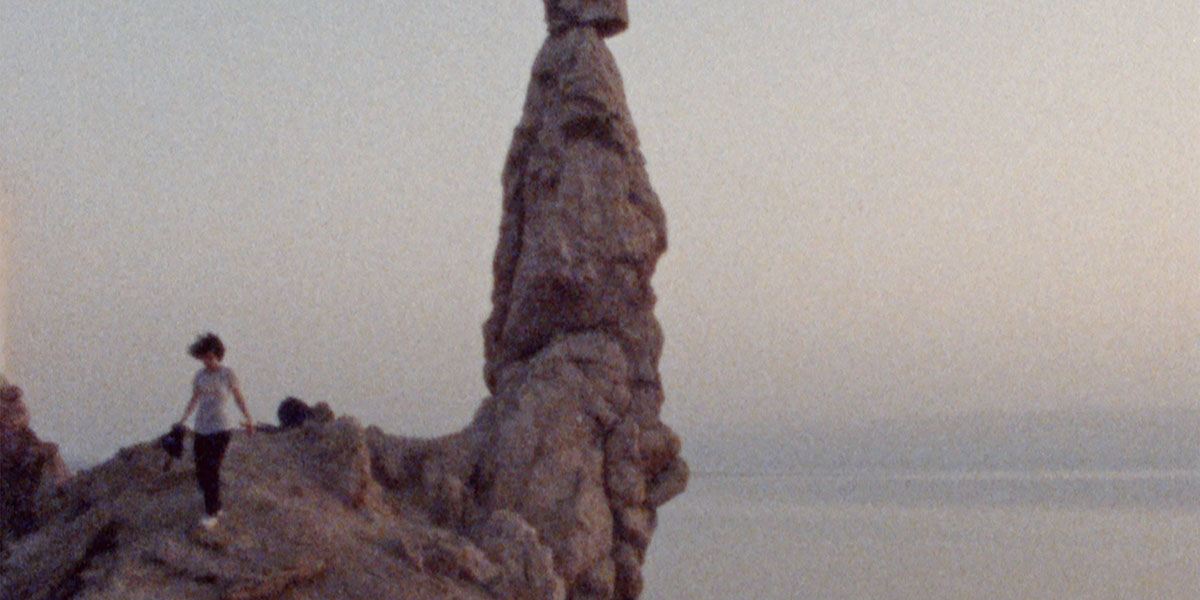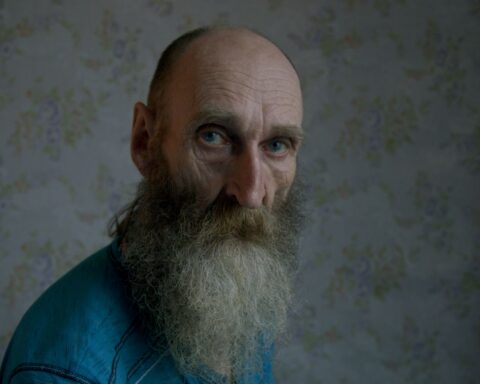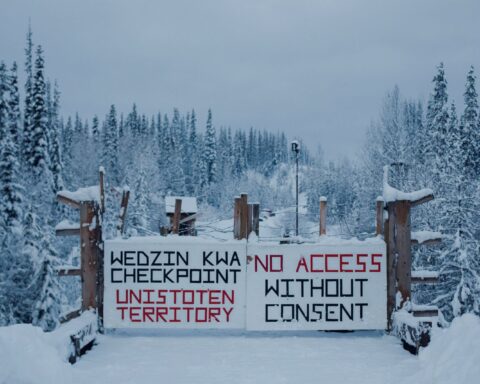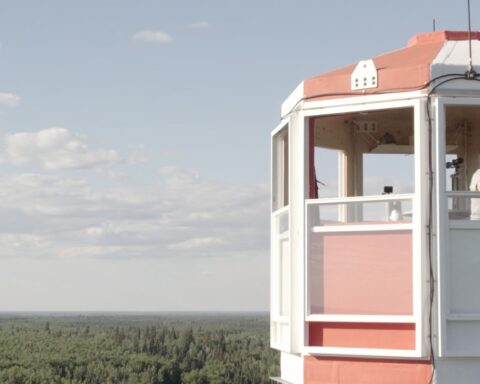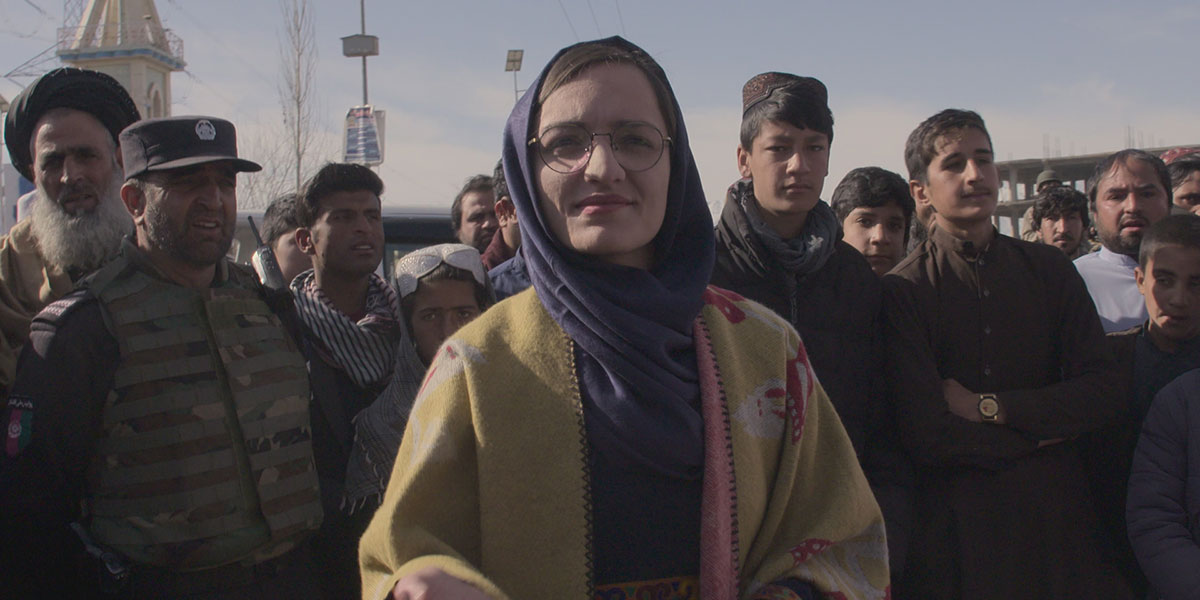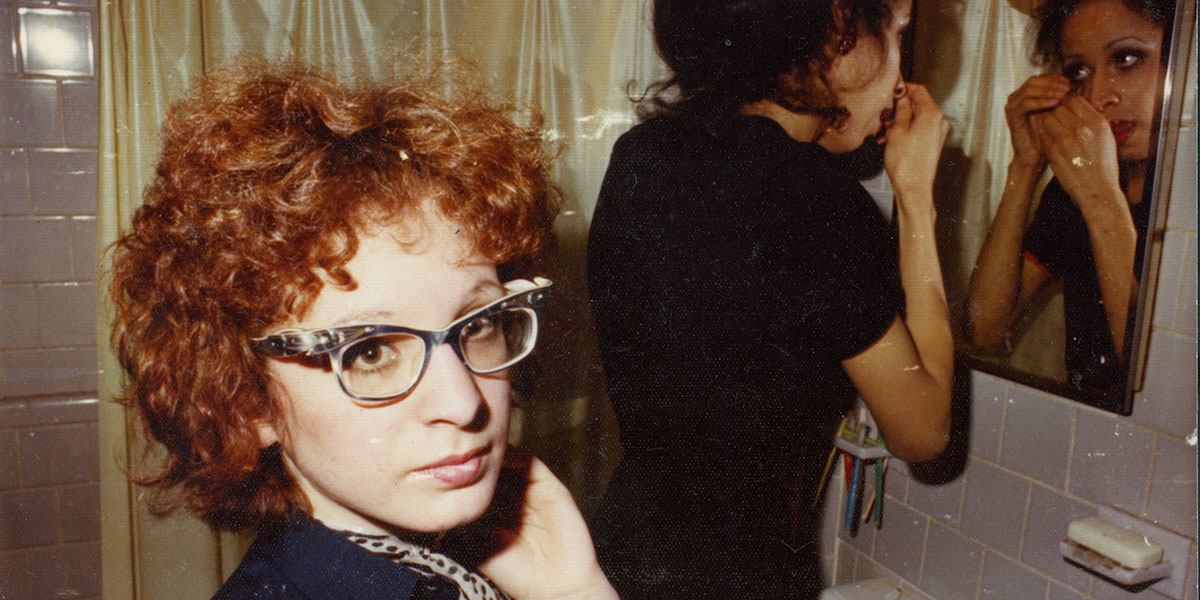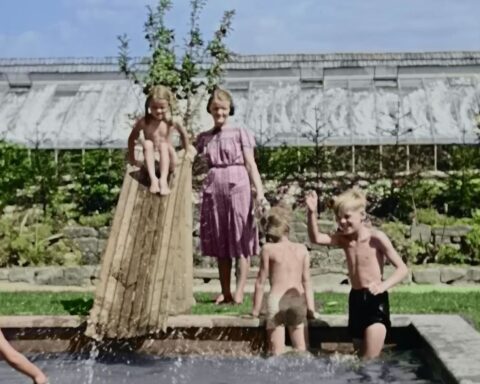Parastoo Anoushahpour is an Iranian-Canadian artist, whose film The Time that Separates Us is playing in the Wavelengths program at TIFF. The Time that Separates Us draws inspiration from the Sodom and Gomorrah tale of lot as Anoushahpour considers questions of identity and narrative authority. POV interviewed her about the film.–Mike Hoolboom
POV: Mike Hoolboom
PA: Parastoo Anoushahpour
PA: I’ve lived outside of Iran almost half my life, but keep going back because all of my family is there. I have a list of unmade projects because there is both internal and external censorship. It’s a common condition for a lot of dual citizens.
As a member of a specific diaspora I’m often asked to represent or explain my home country, and to translate experiences to make them digestible for foreign audiences, and that can be limiting. I would like to be free to follow thoughts about form and abstraction, but find myself having to answer internalized voices that insist the work be more accessible. I think generosity is important when making work, to allow access to another’s experience. But there is a cost to that access. And there are different levels of access depending on who knows what language, who can hear the nuances, the unspoken sentences.
In 2018 I was part of a residency called SpringSession that was based on a walk in Jordan. Ironically, I had to become Canadian in order to visit my neighbouring country, and be exposed again to a language I was forced to learn: Arabic. The divisions between countries and people in that region are so rigid. After thirty years it was a life changing experience to put my body back into that context, to access experiences that are so much part of myself.
The Jordan River Valley is a landscape that has spawned so much narrative, scripture and myth. I was interested in seeing the land that gave form to these stories. If you search for Lot’s wife on Google Maps you will be directed to a rock salt formation on Mount Sodom in Israel as the official site. Though there’s another location in Jordan. The site of Lot’s wife and many other historical sites are doubled across the border between the occupied West Bank and Jordan.
POV: Why are all the sites doubled?
PA: The Israeli government’s commitment is in building a narrative of ownership and origin attached to these locations. They’ve even redirected the river itself in order to create the Jesus baptism site inside Israel that you see The Time that Separates Us. They’ve designed a pool of dirty water, with a line of buoys in the middle marking the border, one side is Jordan, the other is Palestine. As you’re coming out of the water on the Jordanian side you hear people singing the Palestinian anthem, and see the Israeli flag while someone says “Welcome to Palestine.” These tensions are present everywhere.
POV: Lot’s wife is another famous woman who remains nameless. She is a keynote in your movie, both as a physical location and a fable.
PA: God told her not to look back at the people he was massacring, but she was curious, and for this act of disobedience, for seeing what a woman should never witness, she was turned into stone.
When I returned to the region I put out a call for queer, female-identified artists and writers to think about these sites with me. We met weekly and I showed clips of what I had made, along with readings and other films, and proposed writing exercises to embody these locations. We wrote out of those places. We wanted to give form to the border in different ways.
POV: The Jordan Valley has been a site of catastrophe for Palestinians: thousands were evacuated, never to return to their homes, while many continue to live there in prison-like conditions.
PA: I walked the border between Palestine and Jordan, going through checkpoints with my Palestinian friends. You can immediately feel who is welcome and who is not. The girls on the rock reading their texts are part of the Palestinian Diaspora living in Jordan. They talk about longing, exile and return. For me it was important not to put words in anybody’s mouth, to create space for this kind of tenderness in a younger generation that want to create other realities. They talk about desire and queerness in the face of the violence, the border, the occupation.
POV: There is a powerful scene that finds you pinning up scans of a photo made by the American artist Lynda Benglis in 1974 that shows her naked except for a pair of sunglasses and a double-headed dildo. It appeared in Artforum, no less, and became a feminist touchstone, though the artist has cold shouldered the adulations, remarking in a recent interview that the photograph is “a study of the objectification of the self, myself in relation to the subject of the pinup.” Can you talk about this iconic photo, and the provocative biblical text that underscores it?
PA: I find that image personally intriguing. It empowers me in a strange way, and it also raises questions. To what extent do our images of desire come from the West or from other cultures? Who has written the history of female disobedience?
In that scene I was thinking about an image possessing you. The phallic nature of the photograph is related to the powerful phallic presence of the rock that was supposed to be Lot’s wife. I showed the image to the group, and we talked about how locations can become sites of origin for certain people. Narratives of belonging or the right to belong emerge from these stories, along with the right to take, to possess and control. The biblical story narrates Lot’s daughters seducing their father, and bearing children who become the first Ammonites. Our meetings were held in Jordan’s capital, Amman.
POV: Jesus was baptized by John the Baptist in the Jordan River, or so the story goes. Your movie shows tourists re-enacting this baptism in the same spot. We are led there by an armed soldier who delivers us to a viewing platform. Militarized authority and the question of the look is conjured here, where looking is never far from the projection of political power.
PA: The origin narrative has always been part of the border conflict–the question of the river and who baptized who, and when it started. I could only access the site from the Jordanian side because my Iranian passport says: you can’t enter occupied Palestine. This offense carries a jail sentence of up to five years.
Before the legend of Jesus, and the arrival of baptism as a concept there was a story in the Torah about a prophet Elisha who similarly cured leprosy by submerging his enemy in the Jordan River. At every site, in every tale, there are always two nations deciding what is the truth. The idea of cleansing becomes absurd in this scene because the water is disgusting; there’s no clean water now that the river is dry. But the Dead Sea is close by, so all of the underwater scenes were made there. The cities of Sodom and Gomorrah are supposed to lie underneath the Dead Sea. Cleanliness, purgation, punishment and purity all come together in this site in a fascinating way.




